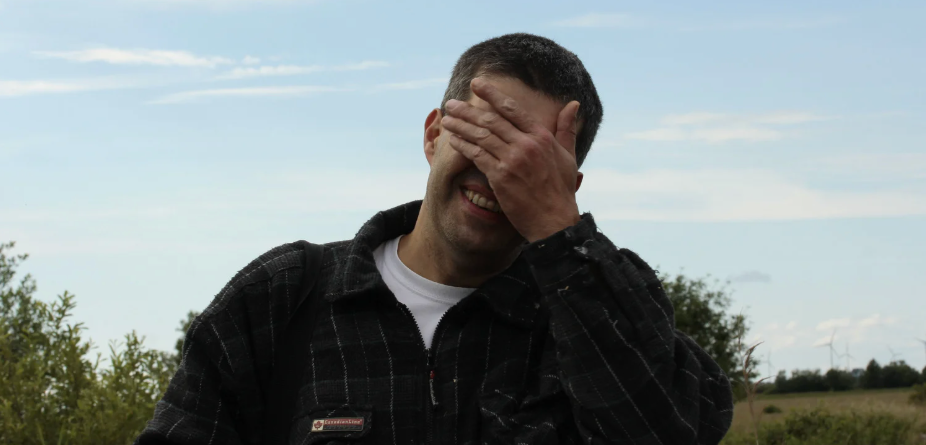50 emotions that don't exist in the English language, but we all have experienced
Words that are untranslatable, but everyone understands.
Elderly man gently touches the forehead of another man outdoors.
English may boast one of the lengthiest vocabularies in the world, but there are still entire emotional universes Merriam-Webster can’t quite encapsulate. Thankfully, other cultures can. Our ability to understand these layered, sometimes conflicting feelings proves that beneath our differences, we share the same emotional language.
Here are some of the most beautifully specific emotions that have no English equivalent, grouped by the inner worlds they illuminate. Together, they show one thing: human feelings are far more connected than we might assume,
1. The many faces of love, longing, and heartache

Chappell Roan said it best: “love is a kaleidoscope.” One of tenderness, ache, inevitability, and memory. These words perfectly capture the emotional fine print of human connection.
- Saudade (Portuguese) – A deep nostalgic longing for someone or something loved and lost. The love that lingers long after the moment is gone.
- Tu’burni (Arabic) – “I hope I die before you,” said not morbidly but because life without the beloved would be unbearable.
- Onsra (Boro, India) – Loving for what you know will be the last time.
- Mágoa (Portuguese) – A heartbreak so profound that its traces remain visible in gestures and expressions.
- Sielvartas (Lithuanian) – A seemingly endless grief or emotional turmoil, often tied to loss.
- Toska (Russian) – Spiritual anguish with no clear cause—sometimes love-sickness, sometimes existential ache.
- Koi No Yokan (Japanese) – The feeling that you’re destined to fall in love with someone. Not love at first sight, but the inevitability of it.
- Forelsket (Norwegian) – The consuming, euphoric high of new love. Technically, we do have an English equivalent (puppy love).
- Mamihlapinatapai (Yaghan) – A shared look between two people, both hoping the other will initiate something they both want.
- Gigil (Tagalog) – The irresistible urge to squeeze someone because they’re impossibly cute or beloved.
- Jeong (Korean) – A deep, multifaceted emotional bond encompassing love, affection, empathy, and attachment.
These words prove that love cannot be reduced to a single emotion.
2. Awe, inspiration, and emotional transcendence

Some emotions lift us out of our everyday selves—through nature, art, music, or inner stillness. These words celebrate those moments when the world feels bigger, deeper, or more alive.
- Tarab (Arabic) – A musical ecstasy that transports you.
- Duende (Spanish) – The visceral, spine-tingling feeling you get from powerful art.
- Shinrin-yoku (Japanese) – The restorative calm from “forest-bathing.”
- Dadirri (Australian Aboriginal) – Deep, contemplative, respectful listening.
- Querencia (Spanish) – A place where your soul rests and regathers strength.
- Ailyak (Bulgarian) – Doing things calmly and slowly, resisting the rush of life.
- Ataraxia (Ancient Greek) – A serene calm that comes from acceptance and clarity.
- Sukha (Sanskrit) – True, lasting happiness not dependent on circumstances.
- Eudaimonia (Greek) – A form of human flourishing that includes joy, purpose, and even the ability to hold suffering with grace.
These are the emotions that open us up to natural beauty and to the deeper parts of ourselves.
3. Yearning, wanderlust, and the emotional pull of place

These words capture the feelings that tie us to geography—whether we’re longing to leave, ecstatic to go, or transformed when we arrive somewhere new.
- Fernweh (German) – A longing for faraway places you haven’t visited yet.
- Dépaysement (French) – The disorientation (good or bad) of being somewhere entirely unfamiliar. Think of it as reverse déjà vu.
- Resfeber (Swedish) – The nervous excitement right before a journey begins.
- Vårkänsla (Swedish) – The giddy, heart-lifting feeling when spring finally returns.
- Iktsuarpok (Inuit) – The restless anticipation of waiting for someone to arrive.
- Waldeinsamkeit (German) – Also belongs here for its nature-rooted serenity.
These words remind us that our surroundings shape our inner world.
4. Connection, community, and shared human vibes

Some feelings only exist between people in crowds, in friendships, in shared silences, or in the subtle emotional temperature of a room.
- Gezelligheid (Dutch) – Cozy, heartwarming togetherness.
- 분위기 / Boon-wee-gi (Korean) – The overall atmosphere or vibe of a situation.
- Fika (Swedish) – A ritualized break to slow down and connect (usually over coffee).
- Mokita (Kivila) – A painful truth everyone knows but agrees not to mention.
- Commuovere (Italian) – Being moved to tears by someone’s story or kindness.
Human life is held together by shared awareness, and these words embody some of those shared experiences.
5. Strength, resilience, and grit

These words show that courage and resourcefulness take many forms.
- Sisu (Finnish) – Deep perseverance and courage in adversity.
- Orenda (Huron) – The human will’s power to shape the world despite fate.
- Jijivisha (Hindi) – A zest for life; desire to live fully and vibrantly.
- 加油 / Jiā yóu (Chinese) – “Add oil!” A cheer of encouragement and solidarity.
- Desenrascanço (Portuguese) – Cleverly untangling yourself from trouble using creativity.
- Pihentagyú (Hungarian) – A relaxed-brain quick-wittedness; clever mental play.
Some emotions are fuel to keep us going.
6. Humor, embarrassment, and the awkwardness of existence

Humans are messy. These words capture the cringiness that makes us lovable.
- Jayus (Indonesian) – A joke so bad it's good.
- Age-otori (Japanese) – When your haircut makes you look worse.
- Litost (Czech) – The sting of suddenly realizing your own misery—often with a dash of revenge fantasy.
- Lebensmüde (German) – “Life tiredness” that sometimes explains reckless behavior.
They celebrate the ways we laugh our way through being human.
7. Serenity, fulfillment, and slower ways of living

These words name feelings we desperately need more English words for—the grounded peace that comes from completing something meaningful or living at a human pace.
- Yuan bei (Chinese) – Perfect, satisfying accomplishment.
- Ailyak (Bulgarian) – Calm, unhurried living.
- Meraki (Greek) – Pouring your soul, passion, and creativity into what you do.
- Querencia (Spanish) – A place of inner refuge and strength.
- Ataraxia (Greek) – Acceptance-based tranquility.
These words are all about the intrinsic fullness that comes from finishing something well, doing things with heart, and letting yourself breathe.
8. The hard-to-define emotional in-betweens

Some feelings sit in liminal spaces, hard to define but unmistakably human.
- Torschlusspanik (German) – The fear that the door of opportunity is closing as you age.
- Desbundar (Portuguese) – Letting loose and shedding your inhibitions.
- Dadirri (Aboriginal) – Quiet, contemplative inner listening.
- Dépaysement (French) – Emotional disorientation abroad (also fits here).
"Bittersweet" is an English word that comes to mind, but how nice to have even more words to choose from.
Why these words matter more than ever
Maybe the real beauty of these untranslatable emotions isn’t that other languages have them and English doesn’t. It's that humans everywhere feel them, even if we don’t always know how to say them out loud.
So the next time you experience something too complicated to explain, take heart: there’s probably a word for it somewhere in the world…and someone who’s felt it, too.
Sources: Berlitz, BBC, Thought Catalog, Collective Hub
